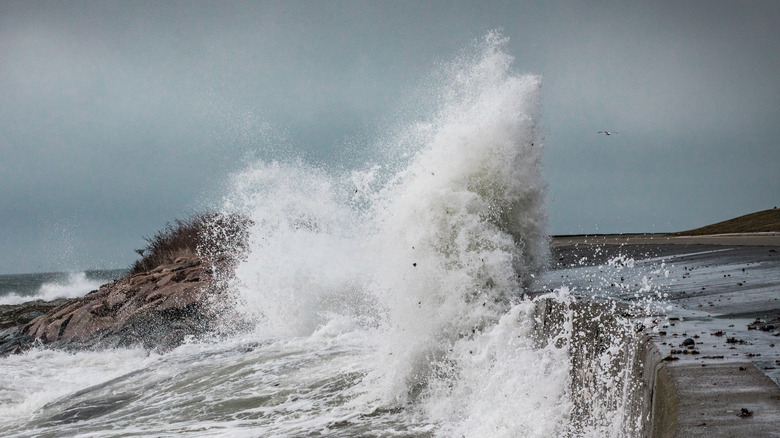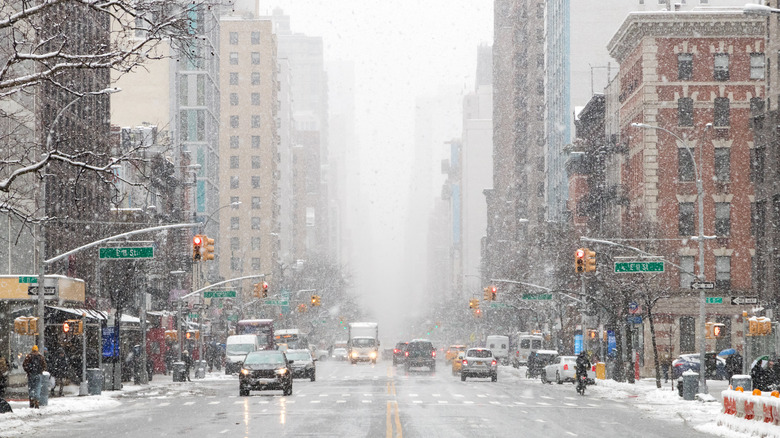What You Need To Know About A Nor'easter
Giant storms called nor'easters are famously common in the northeast region of the North American continent, with anywhere from 20 to 40 nor'easters battering the area each year, as Storm Solutions USA reports. Not all big storms are nor'easters, though, which are typically characterized by torrential rain, many feet of snow, dangerous tides, and even cyclonic winds, among other weather disturbances, according to Mental Floss. What's more, nor'easters can behave differently in different areas. Snow may dump in one area affected by the storm, while rain might flood another.
The truth of the matter is, specific atmospheric conditions and a confluence of certain air and water temperatures must coincide for a storm to be called a nor'easter. Otherwise, it's just a big storm, or maybe even a cyclone. While it won't make much difference what the storm is called while you're digging out your car from underneath the snow, the more you know about what makes a nor'easter a nor'easter will help better prepare you for what's going outside, especially in the Atlantic Seaboard area of the United States and Canada.
Wind, air, and water
The first thing to understand is that even though the specific conditions required for a nor'easter storm to form happen most often along the Eastern Seaboard, the fact it's called a nor'easter has nothing to do with the area of the world these types of storms normally affect, according to The Washington Post. The term nor'easter dates from the 19th century, and instead of referring to the actual northeast region, the name instead refers to the direction that sailors observed the terrible winds coming from. In this case, "the northeast," eventually got shortened to nor'easter.
Otherwise, the exact conditions necessary for a storm to be accurately called a nor'easter include warm southwestern winds meeting frigid Arctic air coming down from Canada. That's where the winds come from, creating something called "the polar jet stream," (per Mental Floss.) Add to that, warm water traveling up the Eastern Seaboard, increasing the relative temperature on the air and land, and a low-pressure system is created, bringing the intense precipitation that's most often associated with storms of this type. As the Washington Post reports, there's also not just one kind of nor'easter, but instead two different kinds: type A, also sometimes called a classic nor'easter, which required the conditions we've already described, and type B, which form as cyclones in the Midwest, before traveling east and growing in strength and power.

